Setting – Melissa Bailey: Beyond The Sea
The #BookConnectors Round The World blog tour has commenced its long journey in my native land of Scotland. If you have never had the opportunity to experience the remote and haunting beauty of Scotland’s West coast and the Western Isles then Beyond The Sea by today’s guest, Melissa Bailey, should immediately be added to your shopping list.
Melissa has kindly taken some time to share some of her memories on the places and events which inspired Beyond The Sea. The pictures are also Melissa’s and beautifully compliment her writing (while also allowing us the chance to show off some of Scotland’s beauty on this Round The World blog tour).
I have been asked a lot about the setting of Beyond the Sea, and why I chose the Hebrides as the landscape in which the action of the novel plays out.
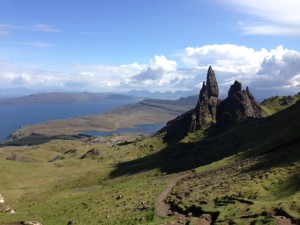
While the book emerged from a single image of a woman, her hair turned white in grief, standing alone by the sea, a lighthouse in the near distance behind her, I think I probably knew even then, way back in the beginning when I didn’t know much else, that the woman was standing on a beach in the Inner Hebrides. It is a part of the world that I love and have been visiting for many years: Mull, Iona, Skye and the small islands, the stunningly isolated Rum, Canna, Muck and Eigg. I’m drawn to its raw beauty, its wildness, the fact that the weather can change in an instant, sunshine becoming rain becoming sleet. It is brutal, elemental, timeless – craggy mountain ranges, desolate moorlands, restless ever shifting seas.
And yet, I feel there is also something redemptive, magical almost about this landscape. The sea takes away, and yet it also gives back. It is an endless, eternal pattern. The sea is often death, but it is also life. So the remote fringes of the British Isles, the untamed edges of civilisation, seemed a very natural and fitting backdrop for a woman touched by devastating loss, her emotions as turbulent and fast changing as the winds or the tides, but perhaps moving slowly towards redemption.
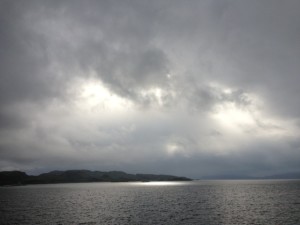
So a story began to evolve. The woman became Freya, whose husband and son vanish at sea the year before the novel begins. She returns to the lighthouse keeper’s cottage they once called home, seeking solace, trying to lay to rest the dreams that haunt her sleep. I began to research the Hebrides in more detail, stories of storms and shipwrecks, tales of mythical islands and mermaids. I read, amongst a great deal of other things, Martin Martin’s ‘A description of the Western Islands of Scotland circa 1695’, which documented not only the geography of the islands but the ancient rituals and practices of the islanders. For example, they would sometimes take a turn, east to west, to ward off evil spirits after disembarking from a boat; they would drink from ‘magical’ wells. They accorded reverence to those with ‘second sight’ who often predicted through visions or dreams things which later came to pass. As with many isolated communities, the supernatural was accepted as present in the everyday – and I wanted it to fit just as naturally into my novel.
Sometime later, I found myself on a ferry leaving Oban (in mainland Scotland) for Mull. The day was cold and overcast as I stood on deck, looking down at the churning sea. As the ferry advanced up the Sound of Mull and we passed Duart Castle in the south east corner of the island, I remembered from my research that the Swan, a Cromwellian warship, had sunk at this exact spot on 13 September 1653 – almost 360 years ago to the day. I began to think about sailors and letters in bottles and the historical thread of the novel began to emerge. This journey, made in 2013, is the same one taken by Freya in Chapter 1 of the novel.
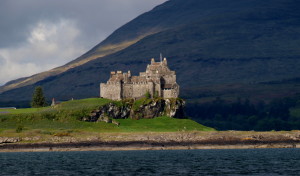
I travelled all over Mull that autumn, circling the whole island on its single track roads. I drove along the A849, from Craignure to Fionnphort (the same route that Freya also takes), following the meandering of the Lussa river, past the towering grandeur of Ben More and the beautiful desolation of the Glen at its feet. I passed the three lochs, emerging into the lowlands around Loch Scridain, and watched the sunshine turn its seawater brilliant blue. When I reached the western shore, I looked over to Iona, just a stone’s throw away, the Abbey clearly visible until the mist rolled in later that day.
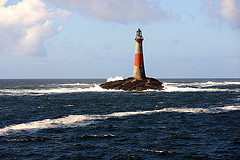
I drove to Knockvologan on the south of the island, waited until low tide, and then crossed the exposed white sand beaches of the tidal island of Erraid (the setting for Robert Louis Stevenson’s Kidnapped). I trekked past the now abandoned lighthouse keepers’ cottages and tried to imagine what it would be like to live on a tiny island like this, isolation complete when the sea rolled back in. Out in the vastness of the ocean, I caught sight of the shadowy lighthouse, Dubh Artach, floating on the horizon, somewhere between land and sea, a mirage perhaps.
Dubh Artach was built 15 miles south west of Mull upon a black rock that sits just above sea level. Perched at the end of an Atlantic submarine valley, it encounters ferocious sea conditions including waves of up to 30m in height. Many have told of the harsh realities of tending the light. Billy Frazer, one of Dubh Artach’s old keepers, recounted the everyday challenges of life at the lighthouse and his face to face encounter with what he called ‘the big wave’ (http://www.bbc.co.uk/programmes/p00dszc3) But his story was not unusual – there are countless other tales from keepers in the Hebrides of danger and disappearance, depression and madness.
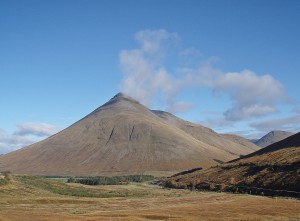
So the lighthouse was also crucial in establishing the mood of the novel. While it is a symbol of sanctuary, of hope, of light in the darkness, it is simultaneously the quintessential symbol of isolation and loneliness – loneliness that can prey upon an already precarious sanity. It seemed to be a wholly appropriate place for Freya to live – a very visual image of her emotional state.
After I returned from Mull that autumn, the novel really started to take shape. Myth and fairy tale fed into history, fact fed into fiction. Beyond the Sea is Freya’s story, but it is also the story of the Hebrides, the lighthouse and the sea – all characters in their own right.
Beyond The Sea is published by Arrow and is available in paperback and digital format.
You can order the book through Amazon here: http://www.amazon.co.uk/gp/product/0099584956?keywords=beyond%20the%20sea%20melissa%20bailey&qid=1440970840&ref_=sr_1_1_twi_pap_1&s=books&sr=1-1
Also available from Waterstones here: https://www.waterstones.com/book/beyond-the-sea/melissa-bailey/9780099584957